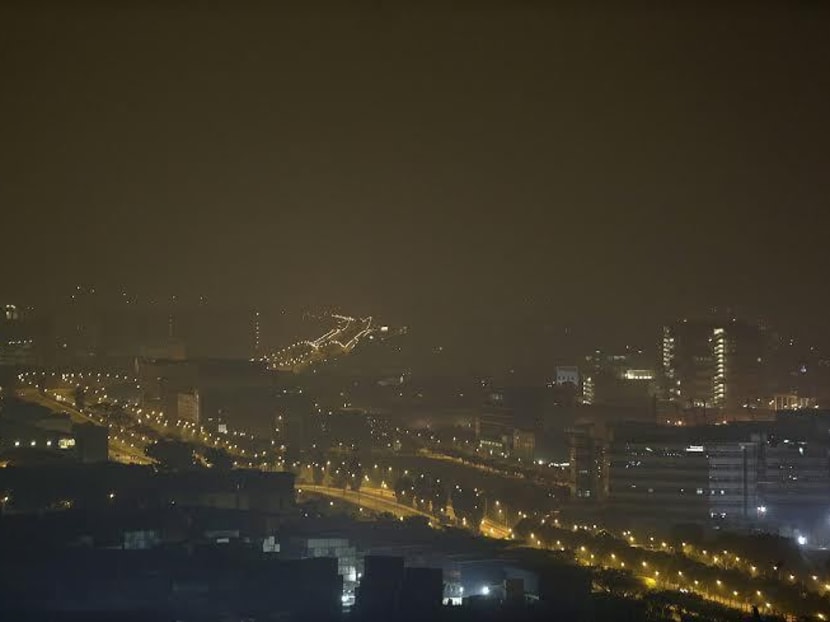PM2.5 levels hit 471 as haze situation worsens
SINGAPORE/JAKARTA — The haze situation took a turn for the worse last night (Oct 19), with both PM2.5 and three-hour Pollutant Standards Index (PSI) readings shooting up.

Haze as seen from Teban Gardens on Oct 20, 2015. One-hour PM2.5 levels reached 471 in the west at 11pm yesterday (Oct 19). Photo: Wee Teck Hian
SINGAPORE/JAKARTA — The haze situation took a turn for the worse last night (Oct 19), with both PM2.5 and three-hour Pollutant Standards Index (PSI) readings shooting up.
PM2.5, fine particulate matter that is the pollutant of concern during the haze, rocketed from 35 to 164 microgrammes per cubic metre at 9pm, to 55 to 442 microgrammes per cubic metre at 10pm. By 11pm, one-hour PM2.5 levels reached 471 in western Singapore — the highest level recorded so far this year.
The three-hour PSI, meanwhile, also surged to from 96 at 9pm to 209 at 11pm. The National Environment Agency (NEA), in its evening update, said hazy conditions can still be expected today, with the 24-hour PSI expected to be in the low to mid section of the unhealthy range. Reduced visibility is also expected if PM2.5 concentration levels are elevated, said NEA.
Meanwhile, the Indonesian forest fires that have caused the haze to drift across South-east Asia are spreading to new areas and are unlikely to be put out until next year, experts said yesterday. “Maybe (the fires) will last until December and January,” said Dr Herry Purnomo, a scientist at the Indonesia-based Center for International Forestry Research, adding that hot spots had reached Papua, a region that is usually spared the widespread fires.
A senior official at a company active in Indonesia’s forested areas told Reuters the haze could continue until March. Indonesia usually enters its wet season in October and November, but this year the country is expected to face moderate El Nino dry conditions, which could strengthen until December and may hinder efforts to control the fires.
Associate Professor Matthias Roth, from the National University of Singapore’s Geography Department, said that assuming that the fires continue to burn, whether Singapore will be affected depends mainly on wind direction and rain.
“We are currently at the tail end of the south-west monsoon season, which is characterised by southerly winds ... As we are now experiencing, whenever the wind direction changes towards the south-west, Singapore becomes heavily affected by the smoke haze from the fires in Sumatra,” he said. “As we enter the inter-monsoon season, which lasts approximately from October to November, the wind direction becomes more variable and hence there should be lesser occurrences of haze.”
By December, the north-east monsoon season will set in, and the prevailing winds will carry the haze from Sumatra away from Singapore.
WITH AGENCIES






